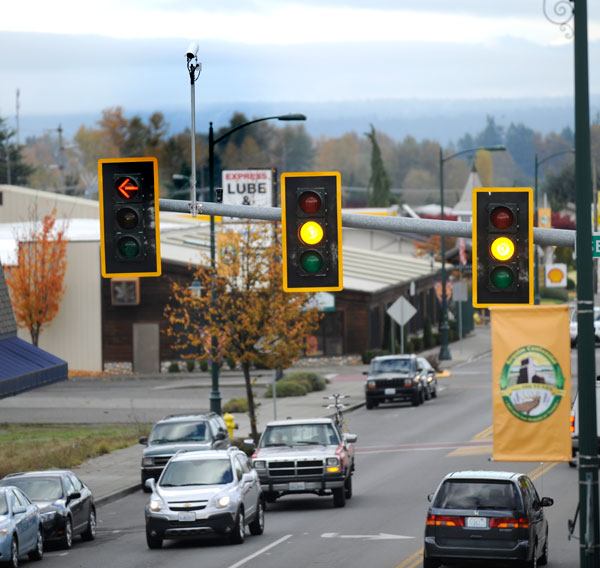by MATTHEW NASH
Sequim Gazette
Big Brother isn’t watching you at the intersection of Washington Street and Sequim Avenue. The city is trying to help traffic flow better.
As part of its improvements to Sequim Avenue, the City of Sequim, with contractor C&J Excavating and subcontractor Olympic Electric, installed four traffic detection cameras on Oct. 25 that officials say should help make the intersection more efficient.
David Garlington, city engineer, said the video cameras sense traffic and regulate the lights to the amount of traffic on the road and have nothing to do with enforcement.
“No pictures are being taken. No video is being taken. It doesn’t have the ability to track speeds,” he said.
For years, the intersection has been a large source of complaint for drivers and pedestrians waiting to cross the street.
Garlington said the Department of Transportation owned the signals before the Sequim Avenue bypass opened and gave ownership of the lights to the city soon after the bypass was complete. The city continues to contract work with DOT for maintenance on the signals.
Garlington said Sequim follows the City of Port Angeles, which uses similar cameras.
Trent Peppard, electrical inspector with the City of Port Angeles, said the cameras are a good way to go for traffic, especially with bikes.
“Putting (sensors) in the ground you have a certain amount of failure rates and it doesn’t detect things like bikes,” he said. “These cameras have some issues with fog and rain but the issues are minimal.”
The City of Sequim spent just under $11,400 on the cameras, which are being prepared this week to begin operation as soon as Nov. 5.
Garlington said by installing the cameras they saved more than $10,000 because it would have cost that much to repair underground wire loops in the old system that were damaged during road repairs.
For now, the city staff’s plan is for the cameras to operate on the same timed schedule as the current underground sensors. Over the next year they’ll analyze the flow to see how to make the best adjustments. The camera also contains a sensor that can count traffic and its direction to provide the city with data over a period of time.
Garlington said the information is going to be useful as they make improvements along Washington Street.
“It’s going to get nothing but busier,” he said.



